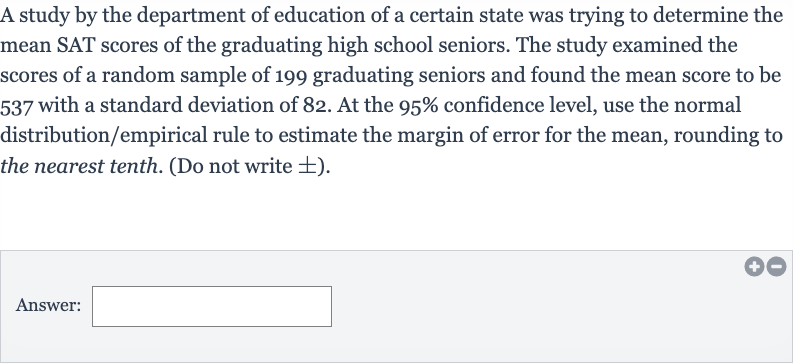AI tutor
Welcome to Bytelearn!
Let’s check out your problem:

A study by the department of education of a certain state was trying to determine the mean SAT scores of the graduating high school seniors. The study examined the scores of a random sample of graduating seniors and found the mean score to be with a standard deviation of . At the confidence level, use the normal distribution/empirical rule to estimate the margin of error for the mean, rounding to the nearest tenth. (Do not write ).Answer:
Full solution
Q. A study by the department of education of a certain state was trying to determine the mean SAT scores of the graduating high school seniors. The study examined the scores of a random sample of graduating seniors and found the mean score to be with a standard deviation of . At the confidence level, use the normal distribution/empirical rule to estimate the margin of error for the mean, rounding to the nearest tenth. (Do not write ).Answer:
- Identify Given Information: Identify the given information and the formula to calculate the margin of error.Given:Mean Standard Deviation Sample Size Confidence Level = The margin of error at a certain confidence level can be calculated using the formula:Where is the Z-score corresponding to the desired confidence level. For a confidence level, the Z-score is typically .
- Calculate Margin of Error: Calculate the margin of error using the formula.First, calculate the denominator:Then, divide the standard deviation by the square root of the sample size:Finally, multiply this result by the Z-score:Round to the nearest tenth:
More problems from Use normal distributions to approximate binomial distributions
QuestionGet tutor help
QuestionGet tutor help
QuestionGet tutor help
QuestionGet tutor help
QuestionGet tutor help
QuestionGet tutor help
QuestionGet tutor help
QuestionGet tutor help
QuestionGet tutor help
QuestionGet tutor help
